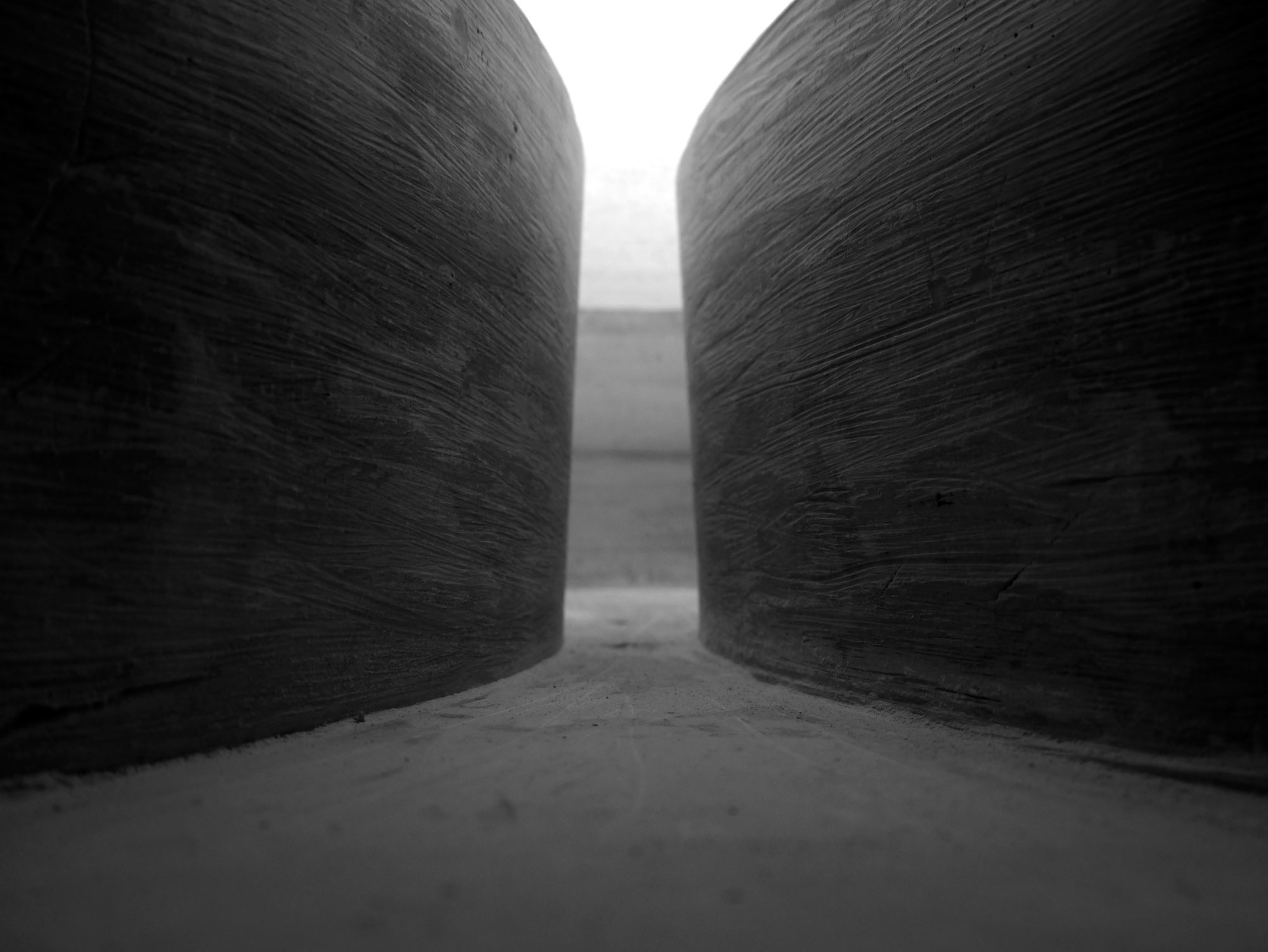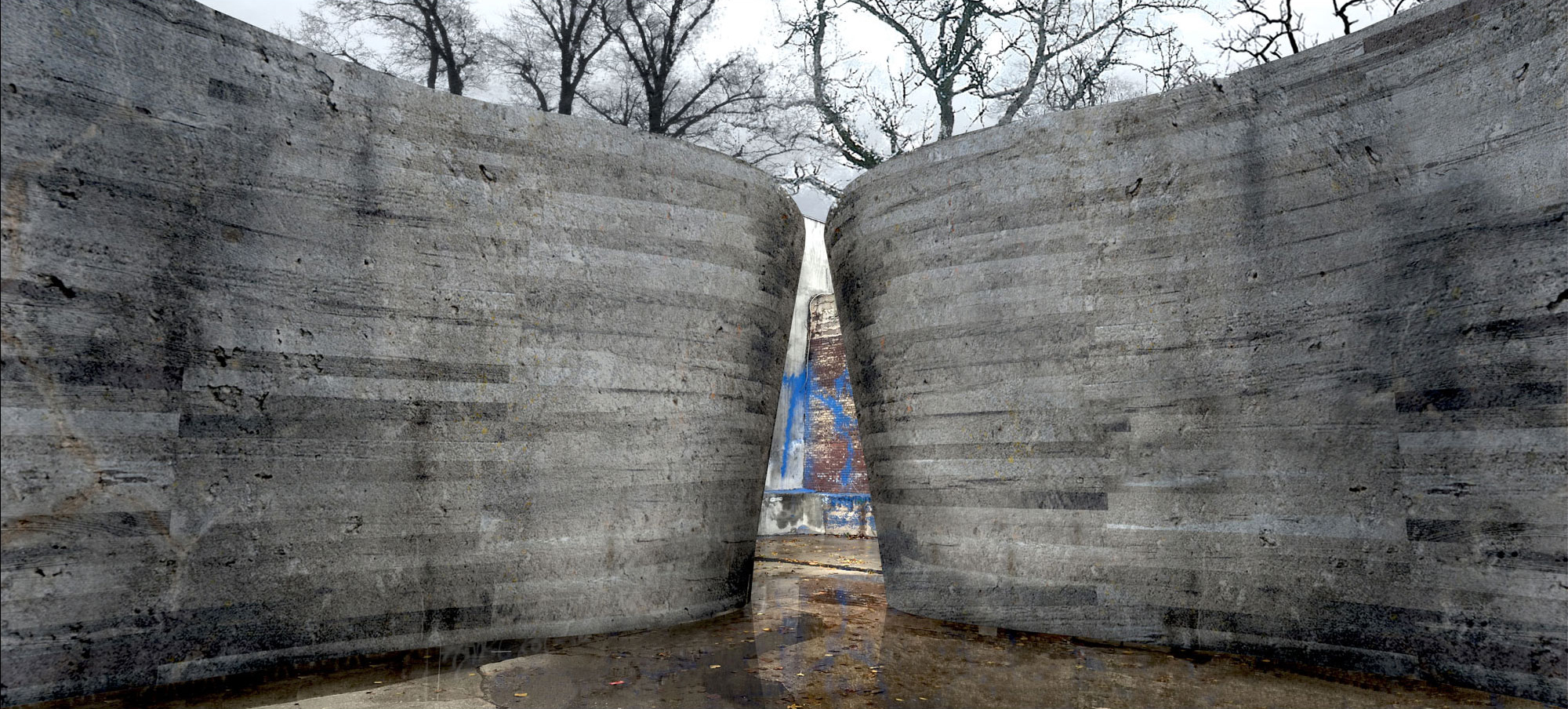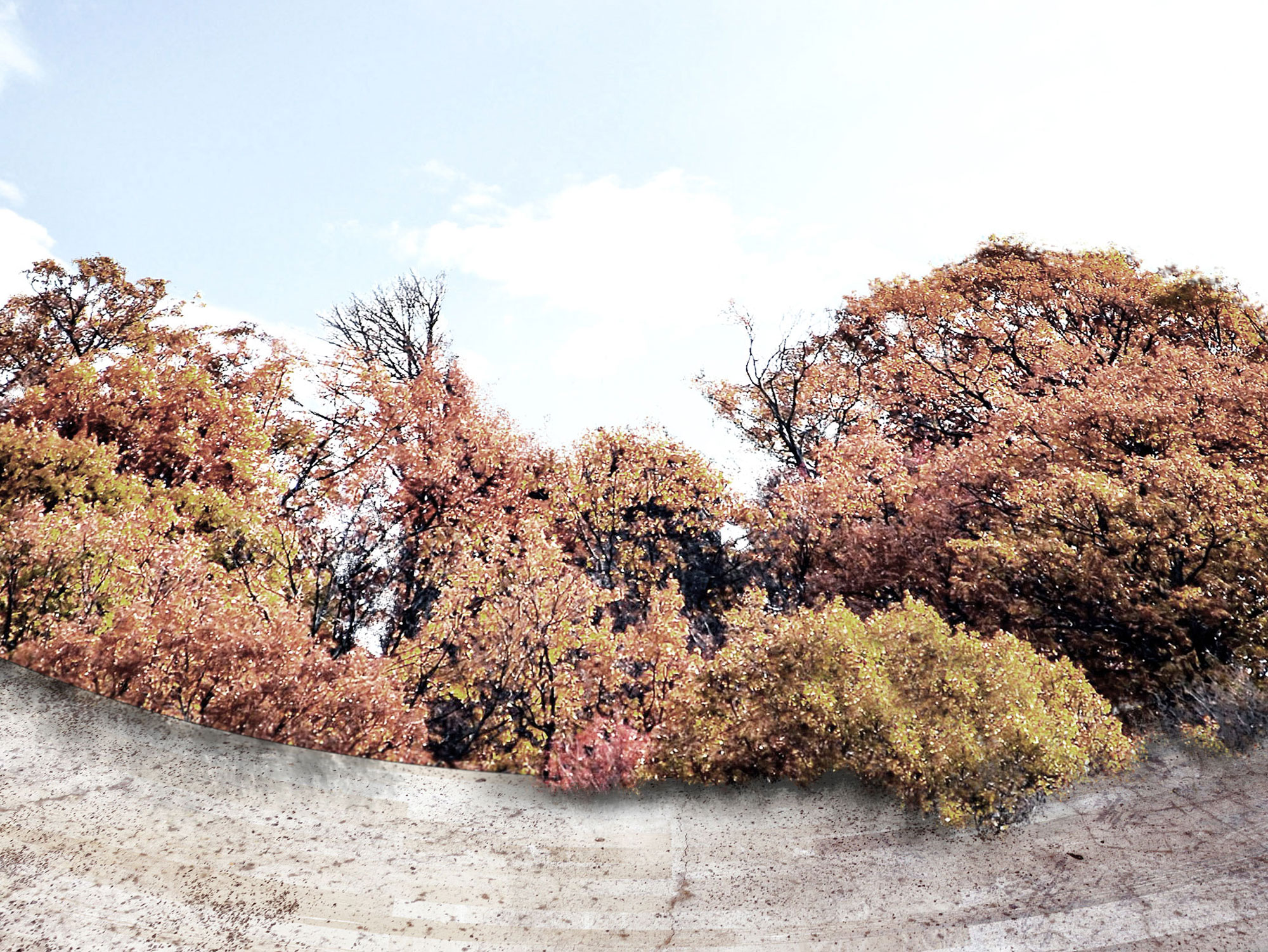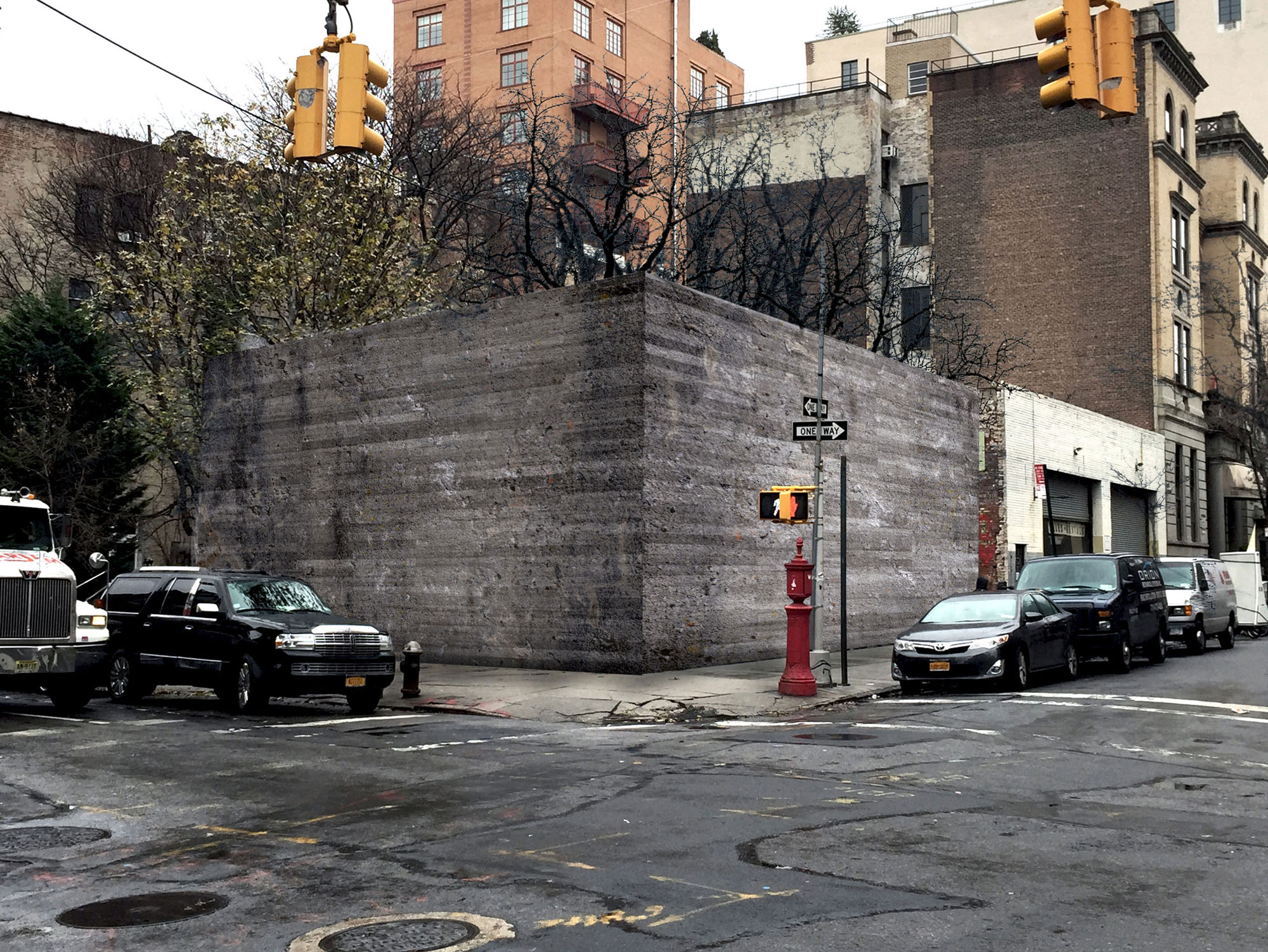The Chapel of Longing
Cornell University Design IX (Fall 2014)
West Village, New York

Study Model
Assignment: to design a space for meditation in the West Village of Manhattan
Professors
Thomas Phifer
Gabriel Smith
Award
International Award for Religious Art & Architecture
Exhitibition
Calvin University
Press Releases
Faith & Form ︎︎︎
Cornell University ︎︎︎
Publication
Association Volume 8
The chapel is non-denominational; it is a place for meditation inspired by the everyday. It is about taking the commuter, occupant, visitor out of their mind and into the place. It is a search for the profound rooted in the mundane.
The structure is a continuous concrete wall with trees planted inside. They hide. The rough-cut oak formwork stays up for a long duration of casting and is slowly removed.
Some remnants of the formwork are used to construct the bench inside. It rots. Over time, the trees rise from within and engulf the space. The clean shadow line along the bowl of the interior transforms to a speckled, soft light. The concrete ages because it was cast with reclaimed aggregate.




The Chapel of Longing is never completed. It is a backdrop for the changing conditions of time; it is weathered by nature and illuminated by the atmospheres of different seasons. The Chapel is first experienced in the spring as a light formwork structure of rough-cut oak lumber. The transformative texture, both on the surface of the boards and their impression on the concrete, reveals the delicate natural light. The continuous wall within is cast in layers of reclaimed aggregate concrete over the course of three years. The boards are taken off over the course of one year. The clean form will decay; the crisp concrete will crumble.



The formwork has been fully removed; the trees have grown over the walls
Reaching the back corner; there is a moment of seeing the inner space of the chapel with the outside world at the periphery. The imprint of the boards is visible on the walls. The interior garden, planted before the form work was constructed, develops a presence after years of hiding behind the wall. Nature is an honest reflection of the accumulation of time.

The interior space begins to show signs of aging; it is isolated and welcoming
As one enters the central space, it opens into a bowl, rigid and bare. In its youth, there was a harsh daylight cast upon its curving walls. In its age, the weathered surfaces are speckled with light filtered through the leaves. There is a single bench in the center, the only content in the contained framed by the trees and the sky. The bench is constructed of the formwork that once lined the interior space; it rots over time. The trees grow toward the end of the summer and envelope the space with fall foliage.
Once this abstract space of meditation is experienced, one sits in the bench and is reoriented back towards where they came. It is no longer about abstraction, but rather a careful framing of the existing Vestiges of the site. It is about the weather beauty of the Mundane. Finally, the return to the street shows an aged surface, not so fresh, not so pure. The trees have grown tall but lost their color and life.

Looking towards the rear of the site once more, the effects of time are becoming more apparent.


The Chapel of Longing is a stage for the forces of nature and an embrace to the effects of time. It collects decades of transformations and brings them to the present human experience. It is the space unto which we project ourselves.

